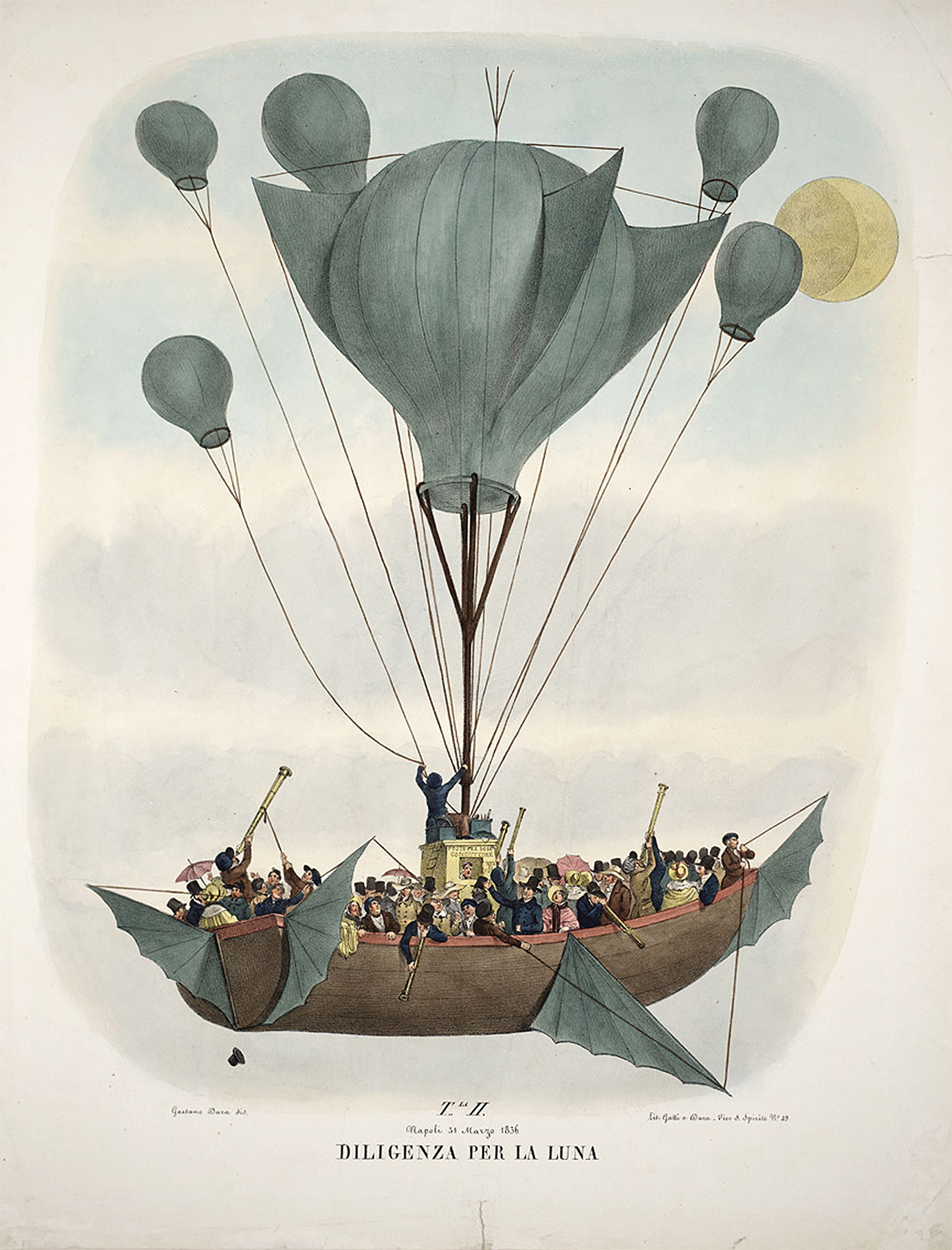Smithsonian Libraries Unveils “Fantastic Worlds: Science and Fiction, 1780–1910”
The Smithsonian Libraries opens its new exhibition “Fantastic Worlds: Science and Fiction, 1780–1910” in the Smithsonian’s National Museum of American History July 1. “Fantastic Worlds” will be on display through October 2016.
“Fantastic Worlds” explores the intersection of science and fiction in the years between 1780 and 1910, a time that witnessed major inventions and achievements in engineering: railways, the telegraph and the precursor to the modern computer. Western explorers were reaching the last uncharted corners of the Earth, and new ideas about mankind the history of the planet and the heavens above were emerging. New frontiers of discovery appeared as certain scientific disciplines came into their own, such as geology and the study of the deep sea. Experiment, invention and discovery were hallmarks of the era, and they altered forever how people live and how they see themselves and the world around them.
The public followed these scientific and technological developments with an unprecedented level of interest. These often astonishing discoveries and inventions found their way into fantastic fictional worlds, as writers creatively explored the further reaches of the new scientific landscape, using imagination to craft hoaxes, satires and fictional tales. “Fantastic Worlds” focuses on themes that have had a lingering afterlife in fiction, exploring the scientific backstory of 19th century lost world fictions, fantastic airships, alien life on other worlds, mechanical men and adventures both undersea and underground—all of which still feature in science fiction today. The exhibition draws from a wide variety of scientific subjects, including Arctic and African exploration, aeronautics, astronomy, electricity, oceanography and geology.
“Fantastic Worlds” showcases Jules Verne’s Twenty Thousand Leagues Under the Sea (Boston: 1873), Mary Shelley’s Frankenstein: or, The Modern Prometheus (London:1831), Rudyard Kipling’s With the Night Mail, a Story of 2000 A.D. (New York: 1909), L. Frank Baum’s Ozma of Oz: A Record of Her Adventures... (Chicago: 1907) and Leopoldo Galluzzo’s Altre scoverte fatte nella luna dal Sigr. Herschel [Other lunar discoveries from Signor Herschel] (Naples: 1836). Also highlighted are artifacts from the National Museum of American History, including a lantern slide (ca. 1850), an aneroid barometer (ca. 1870), a voltaic pile (ca. 1805) and a model of Charles Babbage’s Difference Engine No. 1 (ca. 1820).
This exhibition will invite visitors to travel to the surface of the moon, the center of the Earth and the depths of the ocean—to the fantastic worlds of fiction inspired by 19th-century discovery and invention.
About the Smithsonian Libraries
The Smithsonian Libraries maintains a collection of more than 2 million volumes and serves as an educational resource for the Smithsonian Institution, the global research community and the public. The Libraries are located in Washington, D.C.; Edgewater, Md.; New York City; and the Republic of Panama. For more information, visit the Smithsonian Libraries website.
# # #
SI-297-2015

